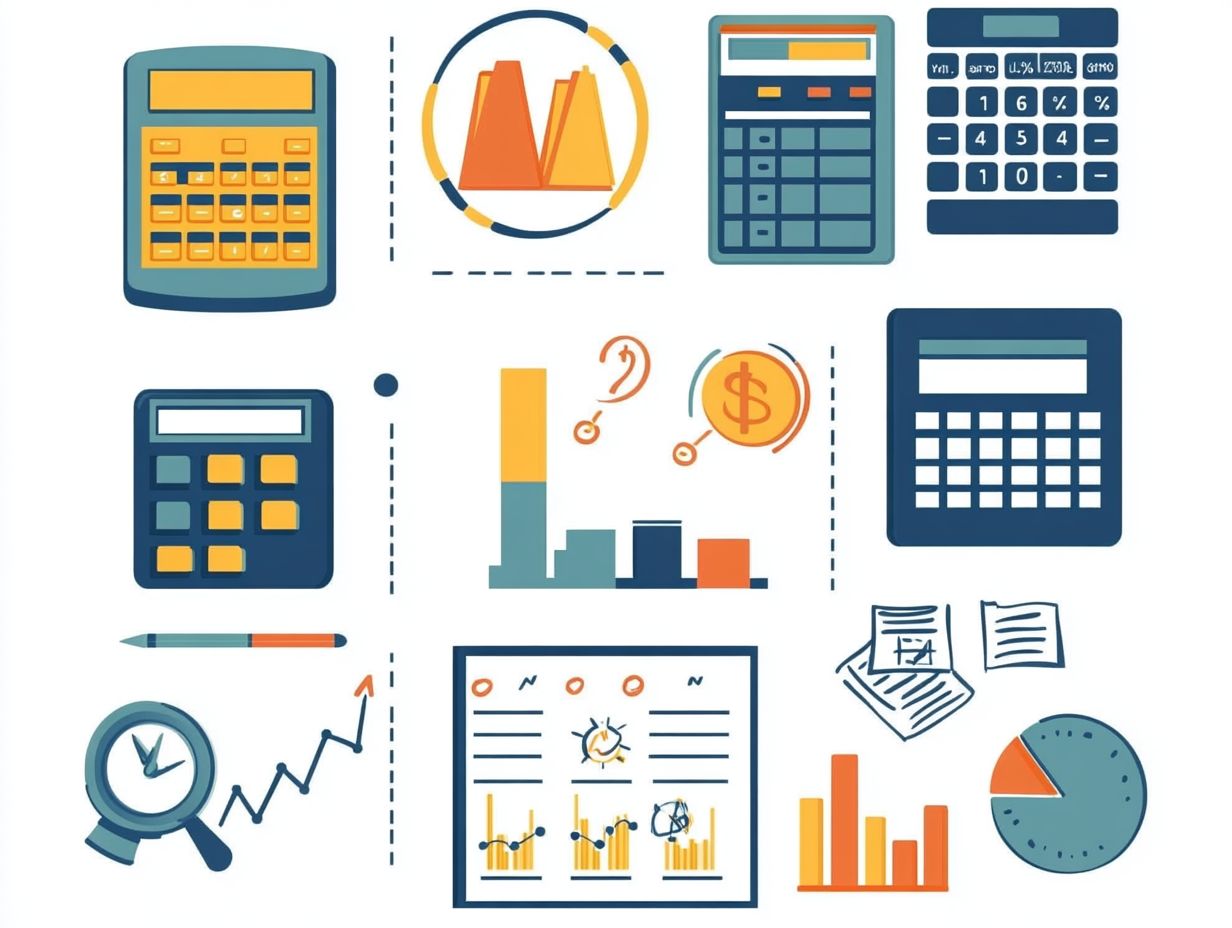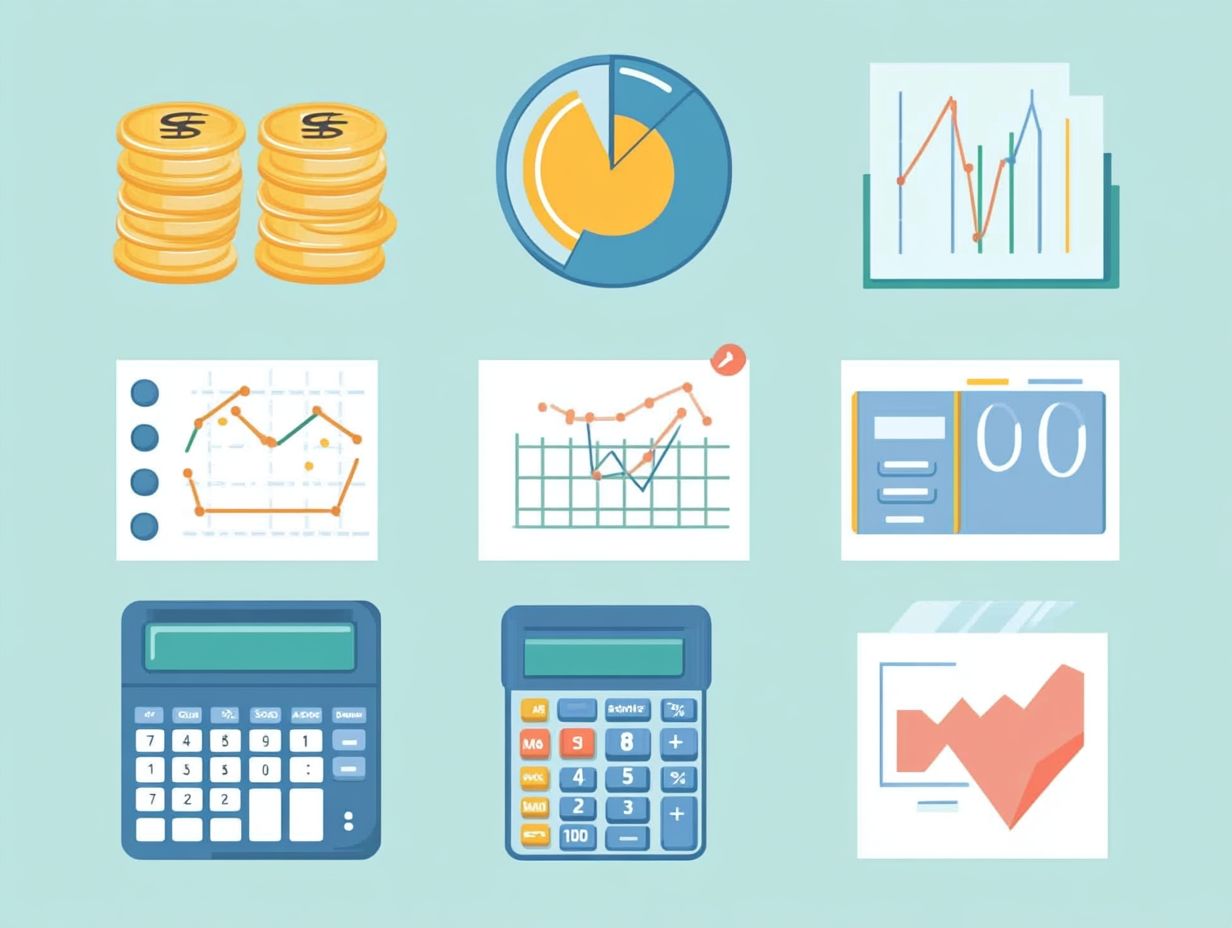What are the Different Types of Budgeting Systems?
Budgeting transcends the mundane task of managing finances; it’s a strategic roadmap that leads you toward your aspirations and secures your financial stability. Get ready to take control of your finances!
By grasping the various budgeting systems at your disposal, you empower yourself and your organization to make well-informed financial decisions. This guide delves into an array of budgeting methods, including traditional, zero-based, activity-based, and value-based budgeting. It also introduces the principles of beyond budgeting, such as the pay-yourself-first budget and cash envelope systems.
Whether your goal is to optimize your personal finances or streamline your organization’s budget, this resource is designed to help you select the system that perfectly aligns with your needs. Immerse yourself in this exploration to uncover the most effective approach for your financial journey.
Contents
Key Takeaways:

- Traditional budgeting uses the previous year’s budget as a base.
- Zero-based budgeting demands justification for all expenses.
- Activity-based budgeting ties funds to specific actions.
What is Budgeting?
Budgeting is your systematic approach to crafting a plan that skillfully manages your expenses and income. It guides you toward optimal financial health and your savings aspirations.
It entails tracking your spending patterns while categorizing necessary expenses and extra spending to maintain a balanced cash flow.
By adopting various budgeting methods, including the 50/30/20 rule, you can align your spending habits with your financial objectives. For instance, this budget helps you divide your income into essential needs, wants, and savings or debt repayment.
This allows you to prioritize your financial goals effectively while managing your cash flow.
Alternatively, a zero-based budget requires that every dollar has a job, ensuring that your income minus expenses equals zero. This method is an excellent choice for those keen on tightly controlling their spending, especially in the context of managing debt repayment.
The pay-yourself-first approach underscores the significance of saving before disbursing funds for expenses. It fosters a robust savings mindset through automatic transfers to your savings account.
Each of these techniques offers distinct advantages when utilized effectively, paving the way for greater financial stability.
Why is Budgeting Important?
Budgeting is essential for maintaining your financial health. It enables you to set savings goals, manage debt repayment through effective strategies, and prepare an emergency fund.
By keeping a close eye on your expenses and curbing impulse spending, budgeting gives you the power to make informed decisions about your financial future. Effective budgeting not only helps you avoid falling into debt but also encourages a proactive approach to managing your cash flow.
You might choose to allocate a specific percentage of your income to extra spending while ensuring essential expenses like housing, utilities, and groceries are prioritized. This careful balance allows you to build a solid emergency fund, creating a safety net for unexpected financial hurdles, whether it’s medical bills or job loss.
Keeping track of expenses can enhance your financial awareness. Practicing disciplined budgeting cultivates a saving habit that can pave the way for investments, promoting long-term financial independence and stability through sound money management techniques.
Traditional Budgeting
Traditional budgeting embodies the classic approach to managing your finances. In this method, you craft a budget plan rooted in your monthly income and anticipated expenses.
You can often utilize a budget worksheet to meticulously track your financial activities. This strategy underscores the significance of categorizing your expenses and sticking to a defined budgeting framework.
By doing so, you maintain control over your cash flow.
Definition and Process
The budgeting process begins with defining your financial goals. You categorize your expenses and create a structured plan to allocate your income toward these expenses. This systematic approach gives you the power to understand your spending habits and make informed financial decisions.
By embarking on this journey, you can prioritize essential needs and differentiate between fixed and variable expenditures, fostering a clearer financial picture. Employing budgeting systems like the zero-based or envelope method can be particularly beneficial for tracking daily transactions. Regularly reviewing and reflecting on these transactions not only reveals areas where you can cut back on spending but also encourages adaptive planning.
As your life circumstances evolve, it’s crucial to adjust your budget accordingly, ensuring that your financial objectives remain aligned with your current realities and priorities.
Zero-Based Budgeting

Zero-based budgeting is a detailed way to manage your money that invites you to allocate every dollar of your income to designated expenses or savings objectives. The goal here is straightforward: ensure that your income minus expenses equals zero by the end of your budgeting period.
This method highlights the importance of financial well-being, encouraging you to adopt disciplined spending and saving habits that can lead to greater financial stability.
Definition and Implementation
A zero-based budget requires you to carefully list every income source and identify all expenses, ensuring that every dollar serves a specific purpose. This approach heightens your awareness of spending. To implement it effectively, you should regularly track your expenditures and review your budget at the end of each month, making necessary adjustments for any discrepancies.
This process not only clarifies where your money flows but also brings to light areas ripe for adjustments, reinforcing your financial discipline and enhancing your budgeting approach. By setting realistic expense categories like groceries, utilities, and entertainment you gain a clearer understanding of your monthly cash flow. Employing budgeting apps can streamline this endeavor, allowing for easier tracking and instant updates as expenses arise.
For instance, if you discover that dining out has surpassed its set budget, you have a prime opportunity to reassess your spending habits. Act now to reassess your spending habits and unlock greater savings! Over time, refining this system will lead to greater savings and enhanced financial well-being.
Activity-Based Budgeting
Activity-based budgeting is a method that gives you the power to allocate funds based on the specific activities you plan for a budget period. This approach provides you with a clearer, more detailed understanding of how your expenses contribute to your financial health.
By directly linking costs to activities and outputs, you enhance your financial awareness and make more informed decisions.
Definition and Benefits
Activity-based budgeting invites you to identify and categorize expenses tied to specific activities, enabling a more precise allocation of resources. The key benefits are significant: it aligns your financial goals, enhances decision-making, and increases accountability for spending.
By dissecting costs into distinct activity categories, you gain deeper insights into your financial landscape, making it easier to track how resources are utilized across various departments or projects. This method gives you the power to prioritize funding based on the importance and performance of activities, ensuring that high-impact initiatives receive the support they deserve.
Focusing on activities rather than traditional line items fosters a more strategic approach to financial planning, driving efficiencies and minimizing waste. Ultimately, embracing activity-based budgeting cultivates a disciplined environment where every dollar spent is justified, paving the way for better forecasting and more informed decisions about future expenditures.
Value-Based Budgeting
Value-based budgeting is an innovative strategy that matches your financial planning with your core values and goals. By adopting this approach, you ensure that your resources are directed toward initiatives that provide the most significant value.
This method enhances your financial health and prioritizes spending in a way that reflects your strategic objectives.
Definition and Key Concepts

Value-based budgeting means matching your money with what matters most to you or your organization, ensuring that every dollar is allocated with purpose and efficiency to support your financial goals.
Identify value drivers and establish expense categories that truly reflect your priorities. This method goes beyond simply assessing traditional line items; it integrates a deeper understanding of what genuinely matters to your stakeholders, giving you the power to make more informed decisions.
By prioritizing expenses based on their ability to support your overarching goals, you can streamline your budgeting process, cutting out waste and ensuring that every cent contributes to your financial objectives.
As a result, you enhance financial accountability and direct resources toward initiatives that resonate with your mission. Value-based budgeting sparks a culture of creative thinking, encouraging you and your team to innovate solutions that align with long-term aspirations while remaining flexible in the face of changing circumstances.
Beyond Budgeting
Beyond budgeting represents a transformative management philosophy that questions conventional budgeting methods. It champions a more adaptable approach, emphasizing continuous planning, cash flow management, and the ability to adjust to evolving financial landscapes.
By embracing this philosophy, you enhance your financial health through a framework that fosters more responsive and agile budgeting practices, allowing for greater alignment with dynamic market conditions and financial goals.
Overview and Principles
The beyond budgeting philosophy places a premium on financial adaptability, continuous planning, and decentralized decision-making. This enables you to navigate financial challenges with resilience. Key principles include eliminating fixed budgets in favor of zero-based budgeting, fostering a culture of accountability, and enhancing cash flow management.
By prioritizing flexibility in budgeting, such as using a cash envelope system for managing expenses and a pay-yourself-first budget, you can swiftly pivot to address market changes, meet customer demands, or respond to unforeseen economic shifts.
This approach nurtures innovation and financial stability through responsible budgeting and agility in your process, empowering you and your team to make informed decisions.
With a decentralized structure for budgeting strategies, you encourage departments to take ownership of their financial responsibilities, cultivating a sense of accountability and promoting proactive resource management. Embracing these principles creates a more dynamic financial environment that supports sustainable growth and elevates overall performance.
Choosing the Right Budgeting System
Selecting the ideal budgeting system is crucial for attaining financial health, as it profoundly influences your ability to manage cash flow and achieve your savings objectives.
You ll find a range of budgeting options available, from time-honored methods to cutting-edge apps that assist in tracking expenses, each offering unique functionalities tailored to meet your specific financial requirements.
Explore how value-based budgeting can transform your financial strategy today!
Factors to Consider
When you re choosing a budgeting system, there are essential factors to consider: your financial goals, your preferred budgeting strategy like the 50/30/20 rule for effective money management, the ease of tracking expenses with Budgeting Apps, and the functionality of budgeting apps like YNAB and Mint. Aligning these elements with your unique financial situation can lead to more effective money management.
Aligning with your long-term goals is key to your financial success! Whether that means saving for a house, paying off debt, or investing for retirement, it s crucial to prioritize these objectives. For example, adopting the 50/30/20 rule where 50% of your income goes to needs, 30% to wants, and 20% to savings can simplify the budgeting process significantly.
Popular budgeting apps like Mint and YNAB (You Need a Budget) offer user-friendly interfaces that allow you to customize categories according to your lifestyle and values. These tools not only help track your expenses but also provide valuable insights through visualizations for financial awareness, making it much easier to stay on top of your financial priorities.
Frequently Asked Questions

What are the Different Types of Budgeting Systems?
- Cash budgeting
- No-budgeting budget
- Traditional budgeting
- Zero-based budgeting
- Activity-based budgeting
- Incremental budgeting
- Rolling budgeting
- Capital budgeting
What is Traditional Budgeting?
Traditional budgeting is a budgeting system that involves setting specific spending targets based on the previous year’s budget. It is a simple and straightforward method but doesn t account for any market changes.
What is Zero-Based Budgeting?
Zero-based budgeting is a system that requires all expenses to be justified for each new period. Every department must start with a budget of zero and then justify their needs and objectives. While it’s detailed and time-consuming, it allows for flexibility and efficiency.
What is Activity-Based Budgeting?
Activity-based budgeting focuses on what you actually do to spend money. It involves identifying activities and allocating resources based on their importance, allowing for a more accurate budget.
What is Incremental Budgeting?
Incremental budgeting involves making small adjustments to the previous year’s budget instead of starting from scratch. It is quick but may overlook changes that could lead to cost savings.
What is Rolling Budgeting?
Rolling budgeting continuously updates and adjusts budgets throughout the year. It allows for flexibility and adaptability but requires more time and resources.
What is Capital Budgeting?
Capital budgeting focuses on long-term investments and projects requiring significant costs upfront. It evaluates potential returns and risks, essential for strategic investments.
Ready to take charge of your finances? Explore various budgeting apps today!





